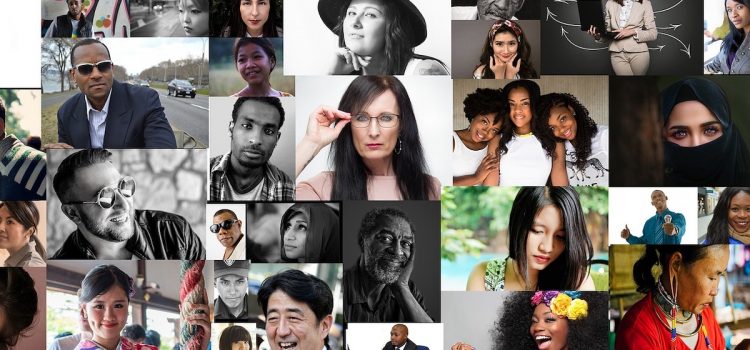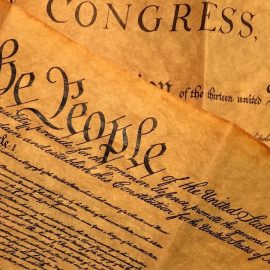

This article is an excerpt from the Shortform book guide to "The Dawn of Everything" by David Graeber. Shortform has the world's best summaries and analyses of books you should be reading.
Like this article? Sign up for a free trial here.
Do societies evolve in a linear manner? Do they go from primitive to civilized?
Throughout humanity’s long history, cultures have been much more diverse than we tend to believe, and the presumed evolution of societies from “primitive” to “civilized” is a myth. David Graeber and David Wengrow present this assertion in their book The Dawn of Everything.
Continue reading to understand the conventional narrative about the evolution of societies and to learn Graeber and Wengrow’s challenges to it.
The Conventional Narrative
According to Graeber and Wengrow, anthropologists traditionally describe the evolution of societies as follows:
Bands: The earliest human societies were small groups of hunter/gatherers (also called foragers) organized into bands. A band is a small group of usually fewer than 100 people, composed of a few extended families living and working together. These societies would have been egalitarian, meaning everyone was equal in social status and resource distribution. As the story goes, all humans lived in foraging bands for the vast majority of humanity’s history.
Tribes: A tribe is a larger group than a band, with a leader and a more complex organization around distinctions in rank and status. Tribes can range from a few hundred to hundreds of thousands of people. Tribal societies may make their living by foraging, raising animals (called pastoralism), or by small-scale farming, called horticulture. While they do have rank and status distinctions, tribes are still fairly egalitarian, certainly as compared with a state-level society. There are typically customs in place to ensure that resources are distributed equally and everyone is taken care of.
Chiefdoms: A chiefdom is typically somewhat larger and more complex than a tribe, often with social status being tied to how closely one is related to the chief’s family. Chiefdoms are usually organized around small-scale farming of communal plots, and they also have customs and rules for ensuring that everyone has the resources they need. There are inequalities in rank and status, but that doesn’t translate into haves and have-nots, and a chief’s main function is to ensure that doesn’t happen. So, these are also considered relatively egalitarian societies, as compared with states.
States: The advent of large-scale agriculture led to a much larger and more complex social organization called the state. Humans began farming at least 12,000 years ago, but intensive cultivation leading to large, dense populations and state societies didn’t arise until several thousand years later, around 3700 BC.
A state-level agricultural society is fundamentally different from any of the other kinds of societies. A state implies a centralized government with the absolute authority to enforce laws. The state is also ranked hierarchically, based on relative access to resources such as ownership of land and monetary wealth. This creates a situation where a large portion of the population has few or no resources and is indebted to the smaller portion of the population who owns the land and other means of production. The rise of the agricultural state is associated with the origin of private property, hierarchy, and patriarchy (male domination).
The authors say the dominant narrative in this framework is that the adoption of agriculture dramatically changed the way humans lived and that it led to formal social and economic inequality. The above categories, they explain, are often presented as an evolutionary trajectory, wherein human societies inevitably go through this linear progression from the simple egalitarian band to the complex hierarchical state, with the degree of farming being tied to the degree of social inequality.
According to Graeber and Wengrow, early anthropologists explicitly defined these stages in terms of “progress.”
The authors clarify that contemporary anthropology patently rejects such value judgments and would no longer classify any human society as savage. But, they point out, it’s still commonly accepted that the forms of society that existed before agricultural states were all somewhat similar—small, simple, and relatively egalitarian.
We can also see in this framework what Graeber and Wengrow challenge in this book: the idea that inequality is an inevitable fact of life in a state-level society.
Challenging the Conventional Narrative
Graeber and Wengrow argue that the truth is much more complex than our traditional narrative suggests. We’ll look at specific challenges to the myth that earlier societies were all egalitarian, and then explain why that myth may have been intentionally perpetuated to undermine the indigenous critique of European culture. Then we’ll examine the authors’ critique of the myth that agriculture led to inequality.
Debunking the Myth of the Egalitarian Tribe
Graeber and Wengrow argue that, when we examine the anthropological evidence, the evolutionist narrative doesn’t hold up to scrutiny. They say the historical evidence shows us that hierarchy and equality have existed in a variety of ways alongside one another throughout all of recorded history.
The whole idea that societies have evolved suggests that all human societies are in whatever stage of development they’re in just because they haven’t yet reached the next stage of development and that they don’t know anything else. But Graeber and Wengrow say there are two major problems with this assumption:
First, many non-agricultural societies had a combination of features of those different structures. Some would be impossible to fit into one of the four evolutionary categories. For example, they say when you look at chiefdoms, those chiefs look a lot like kings. The authors say, for example, some Native American tribes—especially on the northwest coast—had ranks and titles, nobles and commoners, and slaves. Records indicate that in some of these tribes, up to 25% of the population was enslaved.
By contrast, the authors say that the Californian tribes to their south were truly egalitarian and adamantly opposed to slavery. This helps illustrate that as far back as recorded history goes, even cultures living in proximity to one another were often radically different. In fact, Graeber and Wengrow point out that cultures often define themselves in opposition to their neighbors. So, historically, we see more contrast and diversity than similarity among indigenous groups.
So this means there are many societies that wouldn’t be able to be placed on the evolutionary scale.
| Native American Tribes and Slavery Not only were some of the Native American tribes slaveholding societies before European contact, a few tribes even enslaved Africans brought to America by Europeans. The Smithsonian Institute says high-status members of five tribes (the Cherokee, Chickasaw, Choctaw, Creek, and Seminole) enslaved African Americans in order to prove themselves more “civilized” in the eyes of the white settlers. Slaves would have been symbols of, and tools for, economic success, and such success would have garnered privilege and status for Native people seeking to improve their situations in the colonizer’s society. The Smithsonian notes, however, that most Native Americans did not own slaves, and in fact, many more of them were enslaved themselves than were slaveholders. |
Second, there are records of some indigenous cultures choosing to change their social organizations, either temporarily or permanently. For instance, there’s evidence that some societies tried farming for a while, then abandoned it and went back to hunting and gathering. This implies they knew there were multiple options.
The authors say band foragers weren’t always just band foragers because they couldn’t even imagine anything else and had no other options available. People in these societies made conscious decisions to organize themselves in ways that suited their environments, values, and preferences.
This defeats the claim that all societies inevitably progress through these stages over time.
(Shortform note: Researchers have also recently learned that some of the cultures originally assumed to be foragers were actually cultivating plant food. In the forests of British Columbia, First Nations people were believed to be engaged in hunting and gathering wild animals and plants. The plentiful forest gardens looked like wild natural spaces to white settlers. But in fact, ecologists have recently determined that those tribes were intentionally cultivating many of the fruit trees and berry bushes in the area. This is another factor that complicates the simplified classification system of indigenous societies.)
Undermining the Indigenous Critique
Graeber and Wengrow argue that this oversimplified view of indigenous societies was deliberately used to undermine the indigenous critique of European culture by equating “egalitarian” with “primitive.”
What was the indigenous critique? Even though we in modern state societies don’t fully embrace the freedoms of an egalitarian society (for example, we believe authority and law enforcement are necessary), Graeber and Wengrow point out that the values of contemporary American and European cultures are more aligned with the values of indigenous Americans in the 1700s than with European culture from that time. They argue that this is because the “indigenous critique” by Kandiaronk and others like him had a profound influence on European Enlightenment thought.
| Survival of the Fittest The evolutionist narrative of human societies is not only incorrect, but it’s also actively harmful, as it has been used to justify racism. In thinking about these systems for categorizing societies on a scale from savage to civilized, early social scientists also noted that people in these different societies looked different. It was only at this point in history (during the colonial era of the 1800s) that the concept of human “races” as distinct biological categories emerged. When the concept of race overlapped with the idea of social evolution, this could justify the claim that some humans were naturally less-evolved, and therefore inferior, to other humans. In fact, contrary to popular belief, it was not Charles Darwin who coined the phrase “survival of the fittest”—it was social Darwinist Herbert Spencer, in discussing the evolution of societies. Using these ideas, then, the colonizing societies could conclude that they were naturally superior and more fit for survival, while the indigenous peoples they encountered were less fit and destined to die out. And, of course, they could use this to justify eliminating them. |
Debunking the Myth of the Agricultural Revolution
The idea of an agricultural revolution is also something of a myth, according to Graeber and Wengrow. They point out that there’s evidence that people were cultivating crops since at least 10,000 BC, while major state-level societies didn’t happen until long after that. Also, they say, some societies have farmed and never become hierarchical states.
Additionally, Graeber and Wengrow point out that there were non-agricultural societies that had the concept of private property and some that recognized communal property. So, the authors suggest that farming allows for the possibility of a hierarchical state to emerge, and it is conducive to notions of private property, but it doesn’t make these things inevitable, nor does it cause them to happen.

———End of Preview———
Like what you just read? Read the rest of the world's best book summary and analysis of David Graeber's "The Dawn of Everything" at Shortform.
Here's what you'll find in our full The Dawn of Everything summary:
- How our beliefs about the evolution of human societies have been wrong all along
- An exploration of different notions of freedom and equality
- Thought-provoking questions about the inevitability of inequality






